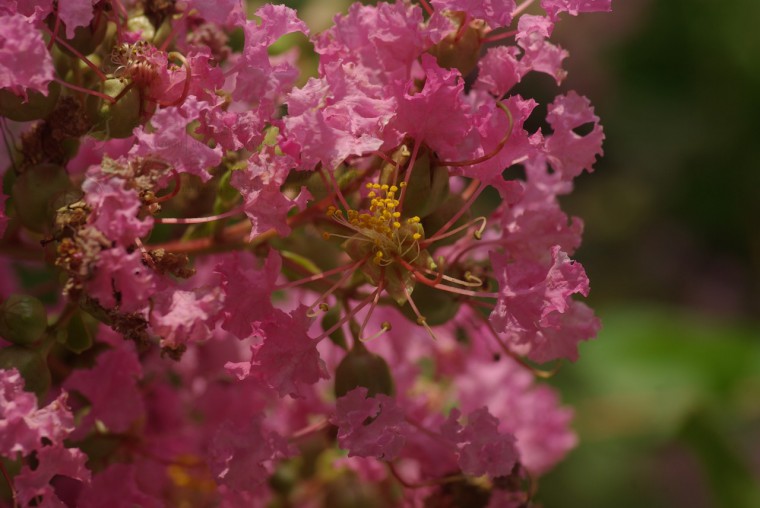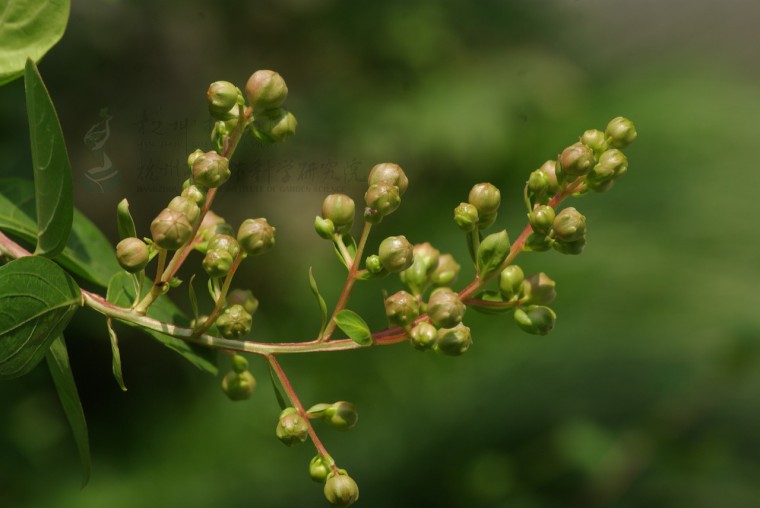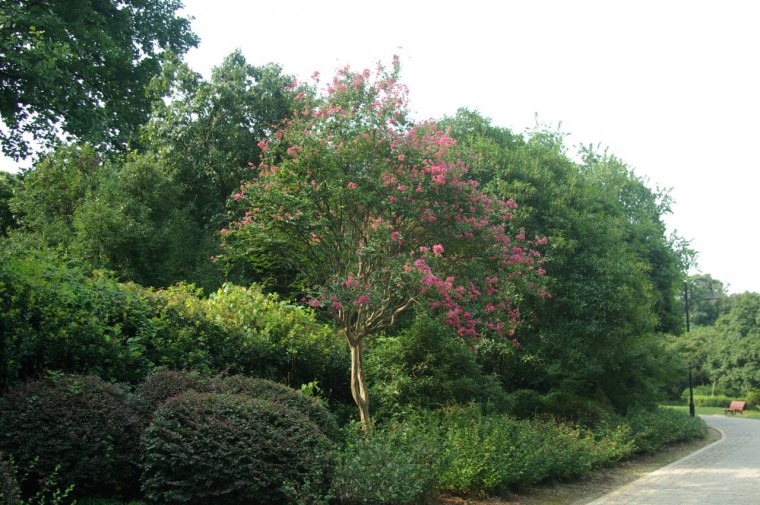音频解说
形态描述
落叶灌木或小乔木,高达9m,树皮光滑,片状脱落,灰白色或灰褐色。枝干多扭曲,小枝具4棱,略成翅状。叶互生或有时对生,叶片纸质,椭圆形、宽长圆形或倒卵形,长3~7cm,宽1.5~4cm,先端短尖或钝形,有时微凹,基部宽楔形或近圆形,无毛或下面沿中脉有微柔毛,侧脉3~7对,叶柄无或很短。花淡红色、淡紫色,直径3~4cm,组成顶生圆锥花序,中轴及花梗无或稀被柔毛;花萼长7~10mm,外面平滑无棱,两面无毛,6裂,裂片三角形,裂片间无附属体;花瓣6,皱缩,长12~20mm,具长瓣柄,雄蕊36~42,外面6枚着生于花萼上,比其余的长得多;子房无毛。蒴果椭圆状球形或宽椭圆形,长8~13mm,幼时绿色至黄色,成熟时或干燥时呈紫黑色,室背开裂。种子连翅长约8mm。花期7~9月,果期9~11月。染色体数目为2n=48。
分布地区
原产东亚至南亚、东南亚,世界各地广泛栽培。杭州各公园庭院常见栽培。
主要用途
花色鲜艳美丽,花期长,为庭园观赏树,有时亦作盆景;木材坚硬、耐腐,可作农具、家具、建筑等用材;根、树皮、叶及花供药用。
其它
本种园艺上有较多品种,其中常见的有银薇cv. Alba(花白色)及翠薇cv. Rubra(花兰紫色)两个品种。
中国植物志英文版
Lagerstroemia chinensis Lamarck; Murtughas indica (Linnaeus) Kuntze. Shrubs or small trees, to 7 m tall. Branchlets slender, 4-angled or subalate, puberulous, glabrescent. Leaves sessile or with petiole to ca. 2 mm; leaf blade elliptic, oblong, obovate, or suborbicular, typically at least some suborbicular to obovate and mucronate, 2.5-7[-10] × 1.5-4 cm, papery to slightly leathery, glabrous or with slight indumentum on veins abaxially, lateral veins 3-7 pairs, base broadly cuneate to rounded, apex acute, obtuse with small mucro, or retuse. Panicles subpyramidal, 7-20 cm, puberulous, densely flowered. Floral tube 6-merous, 7-11 mm, smooth walled or obscurely to decidedly 6-ribbed, glabrous; sepals 3.5-5.5 mm, adaxially glabrous; annulus present; epicalyx absent. Petals purple, fuchsia, pink, or white, orbicular, 1.2-2 cm including claw 6-9 mm. Stamens 36-42, dimorphic. Ovary glabrous. Capsules ellipsoidal, 1-1.3 × 0.7-1.2 cm, 4-6-valved. Seeds including wing ca. 8 mm. Fl. Jun-Sep, fr. Sep-Nov. 2n = 48, 50. Semishaded places, rich fields, wild or cultivated. Anhui, Fujian, Guangdong, Guangxi, Guizhou, Hainan, Henan, Hubei, Hunan, Jiangxi, Jilin, Shandong, Shanxi, Sichuan, Taiwan, Yunnan, Zhejiang [Bangladesh, Bhutan, Cambodia, India, Indonesia, Japan, Laos, Malaysia, Myanmar, Nepal, Pakistan, Philippines, Singapore, Sri Lanka, Thailand, Vietnam; widely cultivated throughout these and other warm regions of the world].----from “Flora of China”





